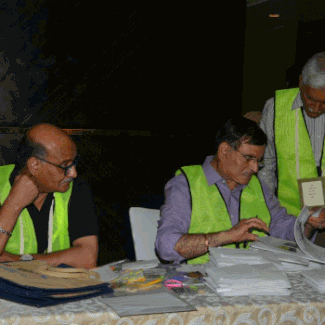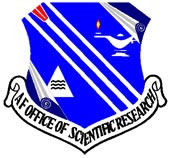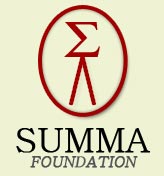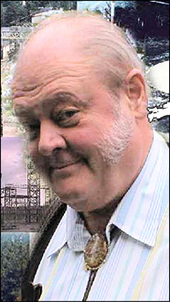
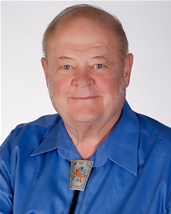
GlobalEM 2024 Award Winners!Globalem 2024 is proud to announce this year's award winners. Here they are, along with the citation, noted on the certificate. Congratulations! 2024 HPEM Fellow 2024 Young Scientist Award GlobalEM Has Released Abstract Book!The Abstract Book for the GlobalEM2024 Conference, taking place July 14-19 in Austin, Texas has just been released! Please click this sentence to download your own copy. And click here to be connected to the the official GlobalEM website. The GlobalEM Symposium is being held in Austin, Texas, USA on July 14-19, 2024. This conference is being held in Downtown, Austin, Texas at the AT&T Conference Center. Please click these words for more information or download the pdf by clicking these words. Announcing One New Mathematical Note!Please join us in welcoming a newly-approved Theoretical Note, "Solved Problems in Integral Equations - Part 1" by Dave Giri!
2022 CE Baum Memorial Medal Winners Recognized!Six winners of the Carl. E Baum Memorial Medal were announced at the GLOBALEM 2022 Awards Ceremony held at The St. Regis Abu Dhabi Hotel on Wed., NOv. 16, 2022. The certificate citations that accompanied the bold, brass medals read as follows:
The SUMMA Foundation Congratulates Bill Radasky and Dave Giri!Dr. William A. Radasky was elected Member of the National Academy of Engineering in 2021!
Giri Appointed DL of IEEE EMC Society 2020-2021The IEEE Electromagnetic Compatibility Society announced the appointment of Dr. DV Giri as a Distinguished Lecturer (DL) of IEEE EMC Society for two years of 2020 and 2021. The 50-year-old Society has members and chapters in nearly every country throughout the world. The SUMMA Foundation heartily congratulates "Dave" on this noteworthy accomplishment!
| ||
EUROEM 2016 took place July 11-14 at the Imperial College London, UKDownload all the abstracts for EUROEM2016 by clicking here! AMEREM 2014 was held from July 27 to Aug. 1, 2014 at the University of New Mexico in Albuquerque.The Final Program Book is available here! Download all the Abstracts by clicking here! The YouTube video above is a collection of over 200 photographs that were taken during AMEREM 2014, set to the music of Dr. Carl E. Baum. |
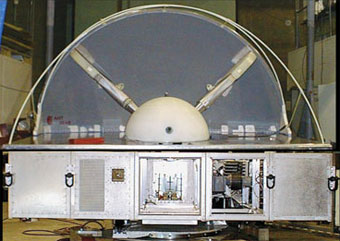
Last Updated July 11, 2025
Electrical and Computer Engineering Department at The University of New Mexico.
"All published Notes are approved for public release
and their distribution is unlimited."
Carl E. Baum was born in Binghamton, New York, on February 6, 1940. He received the B.S. (with honor), M.S., and Ph.D. degrees in electrical engineering from the California Institute of Technology, Pasadena, in 1962, 1963, and 1969. He received the degree of Doktoringenieurs Ehren halber (Dr.-Ing. E.h.) (Doctor of Enginering honoris causa) from the Otto-von-Guericke-
University Magdeburg, Germany, in 2004.
He was stationed at the Air Force Research Laboratory, Directed Energy Directorate (formerly Phillips Laboratory, formerly Air Force Weapons Laboratory), Kirtland AFB, Albuquerque, NM, from 1963 to 1967 and from 1968 to 1971. From 1971-2005 he had served as a civil servant with a position as Senior Scientist at the Air Force Research Laboratory. Since 2005 he has been a distinguished research professor at the University of New Mexico, Department of Electrical and Computer Engineering.
He has been awarded the Air Force Research and Development Award (1970), the AFSC Harold Brown Award (1990), and Air Force Research Laboratory Fellow (1996). He is editor of several interagency note series on EMP (electromagnetic pulse) and related subjects and has received (1984) the Richard R. Stoddart award of the IEEE EMC Society and (2006) the John Kraus Antenna Award of the IEEE Antennas and Propagation Society.
He is a Life Fellow of the IEEE, and is recipient of the 1987 Harry Diamond Memorial Award, one of the IEEE Field Awards, with citation “for outstanding contributions to the knowledge of transient phenomena in electromagnetics,” and is recipient of the 2007 IEEE Electromagnetics Field Award with citation, “for contributions to fundamental principles and techniques in electromagnetics.”
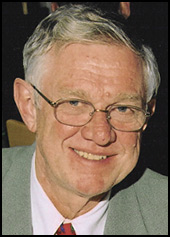
Fred M. Tesche: Working with Carl was not easy, but it was always rewarding. He had expertise in a wide array of technical subjects, ranging from nuclear physics to system-level testing. He could formulate a problem, visualize a solution and design an experiment or numerical verification, seemingly with ease. It usually took me much longer to understand what he had said and how to implement it. But Carl's interests were much wider than just in the technical domain. He was well versed in history and philosophy. He played the piano and composed classical music. He was deeply religious and wrote music for the church choir. He championed the free exchange of information and publications and organized short courses and conferences for continuing education. And he created the SUMMA foundation to further some of these interests.
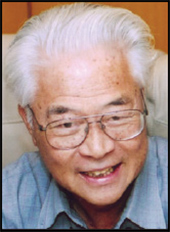
(Kelvin Lee): “Carl built many, many simulators. First one called ALECS, then ARIES and then ATLAS. I think he named all these after Greek God’s names. They always start with A which stands for Air Force . . . The Air Force wanted to send him to school to learn to be an administrator or a manager. He didn’t want to do it and he didn’t want to bother with it.”
(Kelvin Lee): "Carl was a very good experimentalist. I would say he was first rate engineer. Hard to find engineers as good as Carl. He had a tremendous intuition and he always said, “Don’t box yourself in!” He always wanted new ideas . . . He would get in fights with the Colonels and so they wanted to get rid of him but they couldn’t get rid of him because he was very careful. He document everything. One time he said to me, Kelvin, I document all the conversation, everything because the people want to get rid of me.”
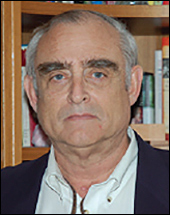
(Robert Gardner): "Carl's job was what Carl decided it was going to be. He never paid much attention to his managers. He just kind of did what he wanted to do. He had constant fights with the people, particularly over the Notes . . . I think he thought he was Mr. EMP. It's just a name I think that comes naturally. His notoriety, if you will, came out when TRESTLE was built. Certainly in the late 60s. It was such a massive structure."
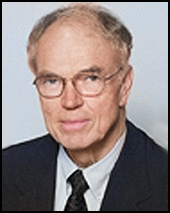
(John Norgard): "Carl mellowed towards the end --- he was more kinder in his comments to other people. But he, then again, he would not tolerate any error and he would correct people and his corrections were amazing! His depth was so good: He just knew so much about so many things and it amazed me.”
(John Norgard): "Music was his other passion. Not only did he play the piano very well, he composed. Mostly classical music that I remember, I don't know if he composed anything else. But he composed this Symphony music, he had this quartet/quintet that he would write for, again I don't remember the details but he was very musical and that seems to go with mathematicians, I understand that music, being very theoretical also fits the mathematicians mind very well . . . You know, he must've worn his shirts for a long time before he changed them and….I think he was a great, brilliant scientist but he wasn't quite human at times it seems. I call him “machine to man". That's how it was in my interaction with him. In the beginning he was just a research machine: All he did was research, he was so focused on that. You know, Carl might come in, the machine would come out an Interaction Note would come out of the process. But then later, as I got to work with him or interact with him more at conferences and out of the work environment I realized he was human after all. Like the football thing. Who would ever expect that he’d be a football player?"
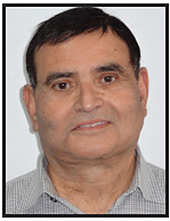
(Dave Giri): "In 2009, during the last short course in Switzerland, in his charming, pompous way, that giant of a man “knighted” me. Carl gently placed a medieval sword upon my shoulder and said, “I want you to continue the tradition of the High-Power Electromagnetics short course and I want you to keep The Notes Series alive.” Carl Baum was a “singularity” amongst his peers but also revered those he called his champions.”
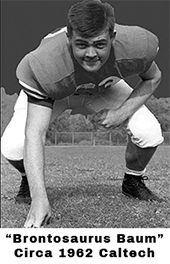
A quote from "Reminiscences of High-Power Electromagnetics" by Carl E. Baum.....
Our story begins with EMP. There was a very important (and expensive) program during the Cold War. Emphasis was placed on strategic systems: missiles, aircraft, and communications. As such, the emphasis was placed on the effects of a high-altitude burst, since the fields could cover the continental U.S. Even a small chance that the strategic forces could be made largely inoperable was unacceptable. However, some attention was paid to the surface-burst EMP in the case of hardened buried facilities.....
I arrived at the Air Force Weapons Laboratory in June 1963 as my first Air Force assignment after my Master’s degree at Caltech (sponsored by the Air Force). Conrad Longmire gave a series of classified lectures to us. One of my first jobs was to proofread the written versions. Much of this material was later published [1, pp. 3–13], [2, pp. 3–13], but I wish that the original papers would be declassified for the historical record. Around the same time, models were also developed for air bursts and surface bursts, and large numerical computer codes were constructed. The Soviets were also working on this problem, and negotiations were undertaken in connection with the above-ground nuclear test treaty (the last such test was in 1962). EMP was one mechanism to detect nuclear explosions. This had to be discussed with the Soviets, and if we were to tell them, we might as well tell everybody.
Part of the problem with the measurements was the lack of adequate sensors to measure the electromagnetic fields, particularly in the nuclear source region with gamma rays, neutrons, and nonlinear air conductivity. So, I was asked to investigate this....
This was a very difficult problem in the case of the nuclear source region. This led to the parallel mesh dipole (PMD) for the electric field, the cylindrical Möbius loop (CML) for the magnetic field, and outside mutual inductance (OML) for currents in pipe-like structures. While I did the basic designs, people at EG&G, Inc. (G. Sower et al.) were busy building them for use on underground nuclear tests....Also, back in the 1960s, a program of EMP testing was begun. For this purpose, we needed EMP simulators—devices capable of producing EMP-like fields over the system under test. For aircraft and missiles (and some ground-based facilities), this turned out to be possible. One day, Lt. W. R. Graham (later President Reagan’s Science Advisor) walked into my office and encouraged me to take up the task (as if I didn’t have enough to do with the sensors). For a summary, see [1, pp. 35–53], [2, pp. 35–53], and [6, Sec. IV] (with many photographs).
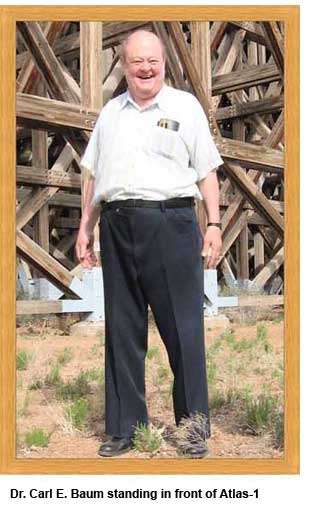 In 1964, we started reconfiguring ALECS (originally intended for instrumentation calibration and checkout, SSN 1) [13] for testing missiles such as Minuteman. I started calculating (SSN 21), and a MegaVolt pulser was designed to drive the simulator with sufficient fields and risetime. It was immediately recognized that a larger facility (ARES) was needed. So, at a meeting with J. Darrah, W. J. Karzas, and W. R. Graham, it was decided that I should come up with a design. This has tested many strategic missiles (including Navy and British), but is no longer in existence after the Cold War. Much was learned from these tests, and necessary corrective measures were taken.
In 1964, we started reconfiguring ALECS (originally intended for instrumentation calibration and checkout, SSN 1) [13] for testing missiles such as Minuteman. I started calculating (SSN 21), and a MegaVolt pulser was designed to drive the simulator with sufficient fields and risetime. It was immediately recognized that a larger facility (ARES) was needed. So, at a meeting with J. Darrah, W. J. Karzas, and W. R. Graham, it was decided that I should come up with a design. This has tested many strategic missiles (including Navy and British), but is no longer in existence after the Cold War. Much was learned from these tests, and necessary corrective measures were taken.
Concerning aircraft, the smaller ones could use those designed for missiles in flight. However, larger ones (bombers, communications aircraft) needed special simulators, both for in-flight conditions and when parked on the ground. This resulted in three new simulators on Kirtland AFB. The largest of these (~400 m long) was the ATLAS I (Fig. 1) with the large wooden trestle test stand (possibly the largest wooden structure by volume in the world).
In my original paper (SSN 82, 1969) [13], I conceived of this by analogy to the wooden trestles used by the transcontinental railroad as it passed through the Rocky Mountains....
Read the original by clicking this link:
"Reminiscences of High-Power Electromagnetics" by Carl E. Baum.....
We would like to acknowledge the assistance of William D. Prather and Judy Johnston of the Air Force Research Laboratory, Directed Energy Directorate, for their assistance in assembling this collection.

We also would like to thank the Department of Electrical and Computer Engineering at the University of New Mexico for providing the resources that have enabled us to place these notes on the World Wide Web.
Dr. Carl E. Baum has published five books: Transient Lens Synthesis: Differential Geometry in Electromagnetic Theory, Electromagnetic Symmetry, Ultra-Wideband, Short-Pulse Electromagnetics 3, Detection and Identification of Visually Obscured Targets, and Ultra-Wideband, Short-Pulse Electromagnetics 8. He is a member of Commissions A, B, & E of the U.S. National Committee of the International Union of Radio Science (URSI). He is founder and president of SUMMA Foundation which sponsors various electromagnetics related activities including scientific conferences, publications, short courses, fellowships, and awards. He has led EMP and HPE short courses at numerous locations around the globe.
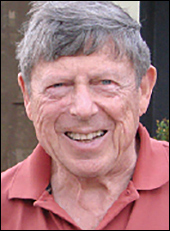
(Ira Kohlberg): "If you weren’t called “Stupid” by Carl you were a nobody . . . It wasn’t a put-down: Once he said that to you, you knew you were one of his friends . . . Carl’s human qualities were just outstanding and he wouldn’t let anybody down. He cared about people. He liked people and everybody was in his clique."
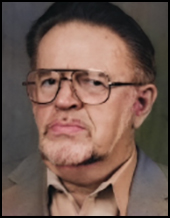
(Larry West): “Carl was too brilliant to ignore. You might resent him. You might hate him but you couldn’t ignore him. The Notes series was unique in that it was edited by the foremost electromagnetic scientist in the world: It was free and the Notes came out quickly . . . Pretty soon the Notes series were being referenced in other publications like IEEE, European publications and Asian publications. Researchers recognized the authenticity of the Notes series and its high degree of technical content and they just referenced it."
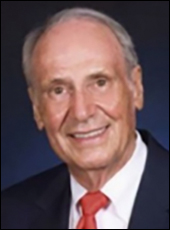
(John H. Darrah): “Carl was a nice guy. He had his oddities but he was a genius — quality guy. People like me who hire geniuses have to make sure that people leave them alone, right? Leave ‘em alone! Yeah, he’s an odd duck, but leave him alone! It’s really important that you don’t screw with him . . . It was terribly intimidating to people that couldn’t just accept that this guy was brighter than you and he had a hard time talking to you because he knew so much more about this subject than you do. It’s like taking a drink of water from a fire hose, you know: You can’t swallow fast enough."
(John H. Darrah): "Carl was always busy solving problems! He’d give a lecture to anybody about any of these problems. Usually it would start with NO! NO! NO! You don’t understand and then he’d go to the board and explain it to you. He was lecturing most of the time. He had a short receiver and a long transmitter. Because he was just brighter than everybody else. He was right. He was just plain right. You know? So when he said, no no no you don’t understand, you know: I never saw him wrong on boundary value problems in electromagnetic theory. He was always right."
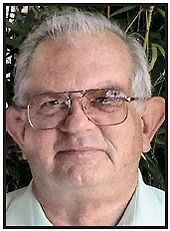
(Bill Prather): “Carl was a practical person. All of his theories, his antennas, even the BLT, for example, were engineered toward applying them toward a practical problem, as opposed to a theoretical physicist who might come up with a theory that’s not practical.”
![]()
Please enjoy some music composed by Dr. Carl E. Baum. Just click a link below.
Sonata for Piano No 1 in C Minor Opus 14
Brass Quintet No 1 in B Flat
String Quartet No 1 in G Minor
Woodwind Quintet No 1 in B Flat
Excerpt from "Career (to Date) In Electromagnetics" by Carl E. Baum
How I became involved in electromagnetics is not obvious in any early sense. My father, George, had studied mechanical engineering for two years at Pittsburgh before taking a job with Carrier (the air-conditioning company) as a construction engineer.
My preschool years were spent six months here, six months there, as George supervised the installation of air-conditioning equipment in theaters or other locations. By the time I entered school, he was the branch construction manager in Atlanta, Georgia, where I attended Sacred Heart School. He ensured that my brother, Neal, and I received the best education available.
When he was promoted to national construction manager in Syracuse, New York, we moved there. After a year (sixth grade) in public school, we relocated into the city, and Neal and I were sent to board at Nazareth Hall Cadet School in Rochester, New York, returning to Syracuse on weekends.
The nuns must have had some salutary effect, as I finished eighth grade as Cadet Major
(head cadet), with a collection of academic medals. Among other responsibilities, I had to lead the drill team (with M-1 rifles) in various routines down the main streets of Rochester on Memorial Day and for other occasions.
In high school, I attended Christian Brothers Academy (CBA), a no-nonsense institution that led Syracuse in both academics and sports. In addition to being on the debate team, playing lead trombone in the marching and concert band, and performing a piano solo in the senior musicale, I graduated as valedictorian.
This led to college, where I ended up at Caltech. As I was finishing at CBA, there was a minor conflict. My piano teacher wanted me to attend Eastman School of Music in Rochester, where I could have studied piano, composition, and conducting. I had already given my own recitals. However, my father wanted me to study engineering, and he won....
I applied to and was accepted by various schools, ranging from MIT to Notre Dame, to study Electrical Engineering. I guess electrical engineering was related to my interest in stereo construction at home and my physics background at CBA. However, George had different ideas. He liked smaller schools, and somehow he heard about Caltech. I was instructed to take the required college board exams, submit my application, and fly to New York City for an interview with a professor, who later became my junior English professor.
So, I flew to Los Angeles and found myself at freshman camp with professors like Richard Feynman. This was something of an awakening. Half the freshmen had perfect scores on the advanced-math college board exam, and half were high school valedictorians. I had both, but the competition was fierce.
At Caltech, the focus was on math, physics, chemistry, and then we’d think about everything else. In retrospect, for someone working in electromagnetics (EM), this was a solid foundation. With some minor detours—such as being the chief football jock—I managed to achieve top engineering grades, sharing the top spot with classmates like Kip Thorne and Gary London.
As a freshman, I also met my Fleming-student-housemate, Bill Graham, who was a senior at the time and later became President Reagan's science advisor. Both of us were in Air Force ROTC. When I graduated in 1962 with a B.S., my ROTC connection proved useful. Through an AFIT (Air Force Institute of Technology) program, I received an initial Air Force assignment to pursue my M.S. in Electrical Engineering at Caltech. This was my first real introduction to electrical engineering, with courses in microwave devices, lasers, EM, solid-state devices, and quantum mechanics. However, my path was still quite flexible and undecided....
It was now time for my first real Air Force assignment. By some chance (or not really, as this applied to all AF ROTC types), I was sent to the “new” Air Force Weapons Laboratory. In 1963, I drove with my father from my M.S. ceremony to Albuquerque, New Mexico, and Kirtland Air Force Base. AFWL had an enlightened policy of having new personnel interview through various organizations. However, my case seemed to be an exception. I only interviewed through the Physics Branch of the Research Division.
This led to a struggle between EMP (Electromagnetic Pulse) and lasers. EMP won, largely through a ploy that allowed me to help the laser team by occasionally using my microwave background to measure laser-induced plasmas. Of course, that never happened.
Captain Henderson, the EMP chief, assigned me to work on the problem of EM field, air conductivity, and measurements in nuclear environments. The tests in 1962 had encountered major problems. I remember touring the Nevada Test Site (NTS) and seeing antennas designed to withstand nuclear blasts, though it was unclear why they were needed to measure EM parameters. I started focusing on air conductivity, including measurements on several underground nuclear tests, in light of the new above-ground nuclear test ban treaty.
I also figured out how to dramatically reduce gamma-ray induced signals in B-dot measurements during a conversation at an airport (I forget which one) with Dr. Ralph Partridge of Los Alamos Scientific Laboratory (LASL). More importantly, in 1964, Ralph started the Sensor and Simulation Notes as a way to communicate among researchers while avoiding bureaucratic hurdles. As I was writing most of the Notes, Ralph suggested I take over as Editor. The rest, as they say, is history.
Meanwhile, back at AFWL, I seemed to be solving some of the problems, and it was thought I should tackle more. One Lieutenant (Dr.) Bill Graham (remember him from Caltech?) was also in this group.....
It was during this period, from 1963 to 1967, that I was truly introduced to electromagnetics by designing various kinds of special-purpose antennas...
Read the original story: "Career (to Date) In Electromagnetics" by Carl E. Baum


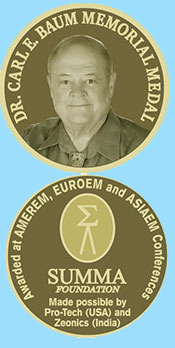 2024 Carl E. Baum Medal
2024 Carl E. Baum Medal


